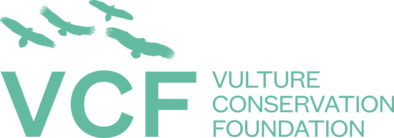| Project period | April 2015 – September 2018 |
|---|---|
| Project area | Europe, Africa and Asia |
| Target species | Bearded Vulture and Cinereous Vulture |
The LIFE Euro SAP aimed to develop new Species Action Plans (SAPs) and to review and update existing SAPs for a total of 16 species.
The Species Action Plans provide the status, ecology and threats of bird species and are used by the European Commission to undertake the key actions required to improve their conservation status in Europe. SAPS also conditions for effective coordination among the European Commission, EU Member States, the international conventions and non-governmental organizations involved in international bird conservation efforts.
This revision was urgent as several species benefiting from SAPs have seen their conservation status deteriorate lately, and/or have very old SAPs – the latter was the case of the Bearded Vulture, which is covered by a SAP from the end of the 90s, that does not include some of the more recent threats and populations dynamics, including the results from the several reintroduction projects that the Vulture Conservation Foundation (VCF) coordinated.
By early 2018, the finalized plans were ready to be adopted by the European Commission, the African-Eurasian Migratory Waterbird Agreement and participating Member States. In order to promote and monitor SAP implementation across Europe, Africa and Asia, a web-based platform collecting and sharing relevant information was created.
LEARN ABOUT THE TARGET SPECIES
EuroSAP was a LIFE preparatory project, co-financed by the European Commission Directorate General for the Environment, the African-Eurasian Migratory Waterbird Agreement (AEWA), and by each of the project partners. It was an ambitious collaboration that spanned 65 countries and involved more than 500 experts, scientists, and conservation practitioners that aimed to change the fate of 16 threatened bird species. The last SAPs of the Bearded Vulture and Cinereous Vultures dated from 1997 and 1996 respectively, so as part of the LIFE EuroSAP, the VCF has been coordinating the revision of the SAPs for these two species.
BEARDED VULTURE
To tackle the several threats the BeardedVulture face, from lead poisoning to collision with cables and unsafe and scarce food resources, the Bearded Vulture SAP suggests a number of solutions. These include farmers leaving livestock carcasses in their fields as a food source for vultures and other scavengers as well as for opting to treat their livestock with alternatives to Diclofenac and other non-harmful NSAIDs to birds. Lead ammunition should also be phased out to limit lead poisoning, and energy and ski infrastructure should be secured with anti-collision markers. National and local authorities should also work to eradicate the destructive practice of illegal wildlife poisoning, which is damaging to vultures, other wildlife and public health.

CINEREOUS VULTURE
The Cinereous Vultures faces various threats including food shortages, habitat destruction, disturbance, persecution, poisoning and electrocution and collision. The Cinereous Vulture SAP identified key solutions to minimise these threats. As with the Bearded Vulture, farmers can leave out livestock carcasses and veterinarians can use alternatives to Diclofenac and other harmful NSAIDs. Hunters can use lead-free ammunition and work alongside law enforcement agencies to end the illegal killing of wildlife, such as direct trapping and poisoning. NGOs and local authorities should collaborate to maintain and enhance the species’ favourable status in countries where it is still breeding and encourage its return to areas where it has become extinct, notably through reintroductions initiatives.

The project was a partnership between BirdLife International (leading partner), Naturschutzbund Deutschland e. V. [NABU], Royal Society for the Protection of Birds (RSPB), Sveriges Ornitologiska Forening – BirdLife Sweden (SOF), Vereniging tot de Bescherming van Vogels (VBN), Sociedad Española de Ornitología (SEO/BirdLife), Vulture Conservation Foundation (VCF), Sociedade Portuguesa para o Estudo das Aves (SPEA), Lithuanian Ornithological Society (LOD), Ligue pour la Protection des Oiseaux (LPO), Hellenic Ornithological Society (HOS), Federation of Associations for Hunting and Conservation of the EU (FACE).















